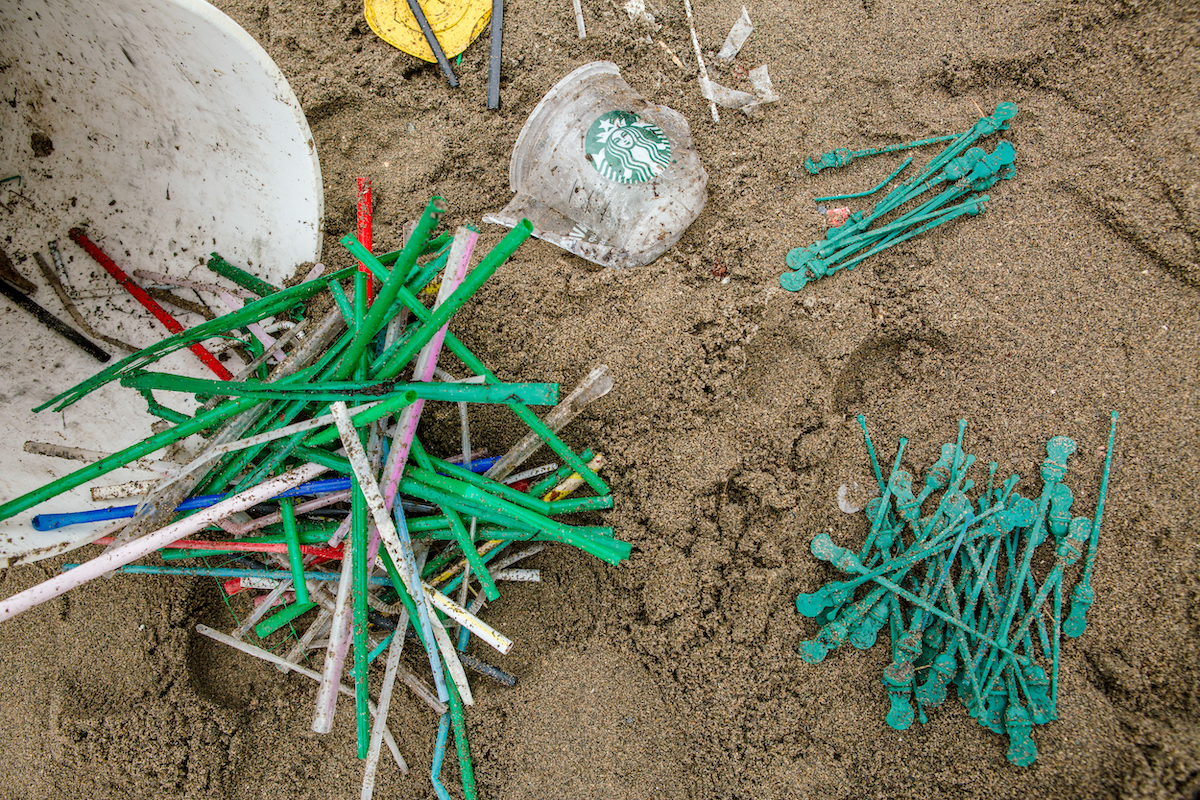I read this article on one of my favourite websites, earth911.com and found it very interesting. It has some good ideas and advice for reducing textile waste. I usually give all my old clothes to a local charitiy shop here in Ciutadella, there are containers all around to place your donated clothes into which is good for me, because if I go into the shop I tend to come out with more clothes! I have had some great bargains from there!
Fabric seems like an oddly specific item to make the list of top waste categories. But textiles are the sixth most common material in the garbage.
Textile waste is a fairly new problem. Historically, fabrics were expensive, labour-intensive materials that would be reused until there was almost nothing left to throw away, and even rags would be recycled into new fabric or paper. Modern textile recycling is much less thorough.
Today, textiles comprise 6.3% of municipal solid waste. We’ve rounded up some good, better, and best options for reducing the textiles your household throws away.
Textile Waste
After paper, food, plastic, yard waste, and metal, textiles make up the largest component of household waste. Most textile waste is discarded clothing. But furniture, carpets, bedding, and even footwear and tires contribute to the total. The EPA estimates that textile waste generation was 16.9 million tons in 2017. Only 2.6 million tons of textiles (about 15%) were recycled that year.
Textile waste has increased 811% since 1960, and this is at least partly the result of the rise of fast fashion. One study found that the number of times a piece of clothing is worn before being discarded has decreased 36% in the past 15 years.
Good
A good time to start cutting down on textile waste is before you shop. Precycle by being more selective with your clothing purchases and only buying what you will actually wear. Buy the best quality you can afford and choose secondhand when possible.
Learn how to care for your clothes and do basic repairs so your clothes last longer. Don’t assume that just because you no longer want an item of clothing no one else will. You may be able to resell expensive and fashionable items, but even older and somewhat worn items can be donated to charity. To paraphrase a cliché, one person’s old trash is another’s vintage treasure. Help others reduce their textile waste by organizing a clothing swap.
Better
Items that are too worn or damaged to donate may still contain enough good fabric to repurpose, and the potential upcycling uses of T-shirts and denim are myriad. However, you may not have a need for (or time to make) recycled products from worn-out pieces of clothing and fabric scraps. If you’re not a crafter, T-shirts (together with old sheets and towels) are good candidates for use as cleaning rags. This will also cut down on paper waste.
Closing the loop with renewed and recycled clothing can be more expensive than mall brands, but are a better choice when you can’t find what you need secondhand.
Best
Once you’ve stopped adding used clothing to the landfill, turn your attention to household furniture, carpets, mattresses, and other less obvious sources of textile waste. As with clothes, consider whether the life of an item can be extended through deep cleaning or reupholstery before getting rid of it. (If you reupholster furniture, be sure to recycle the old fabric.)
When you no longer want usable items, donate them rather than disposing of them. Use the Earth911 database to look for recycling options for unusable items. If disposal is your only option, learn to disassemble items so that you can recycle the components, including upholstery fabric.
Shoes are another challenging product because they contain a combination of textiles, plastic, and leather. Wear your shoes as long as possible, then find out where to recycle tennis shoes. When you buy new shoes, seek out those made with recycled materials.
Often, the easiest way to deal with bulky items like furniture and mattresses is through producer responsibility programs. As with clothing, buy less, buy less often, and when you must buy, get secondhand or recycled products. When purchasing new, look for carpet suppliers and mattress brands that offer take-back programs.
If you are really serious about keeping textiles out of the landfill, it is possible to achieve zero textile waste.
This post was originally published on April 27, 2020.
The blog song for today is: "Save me" by Queen
TTFN







